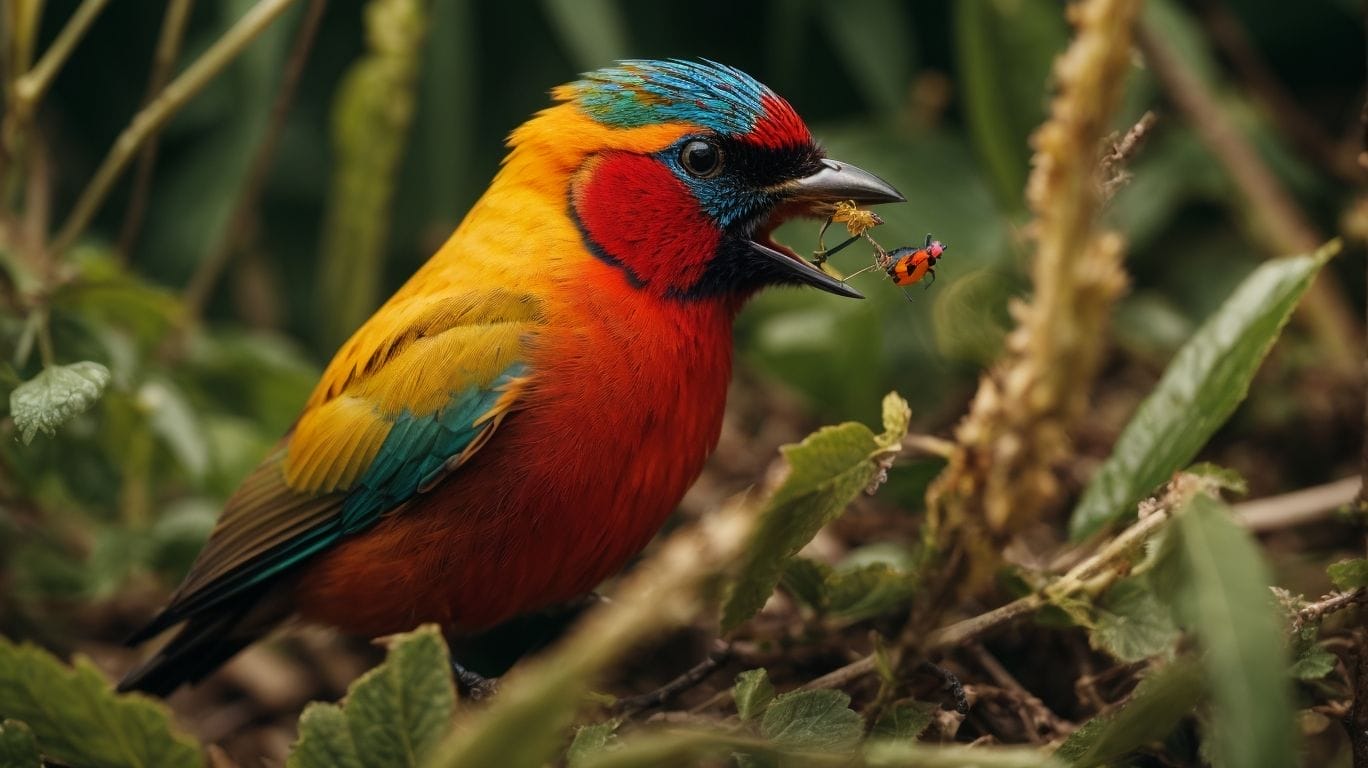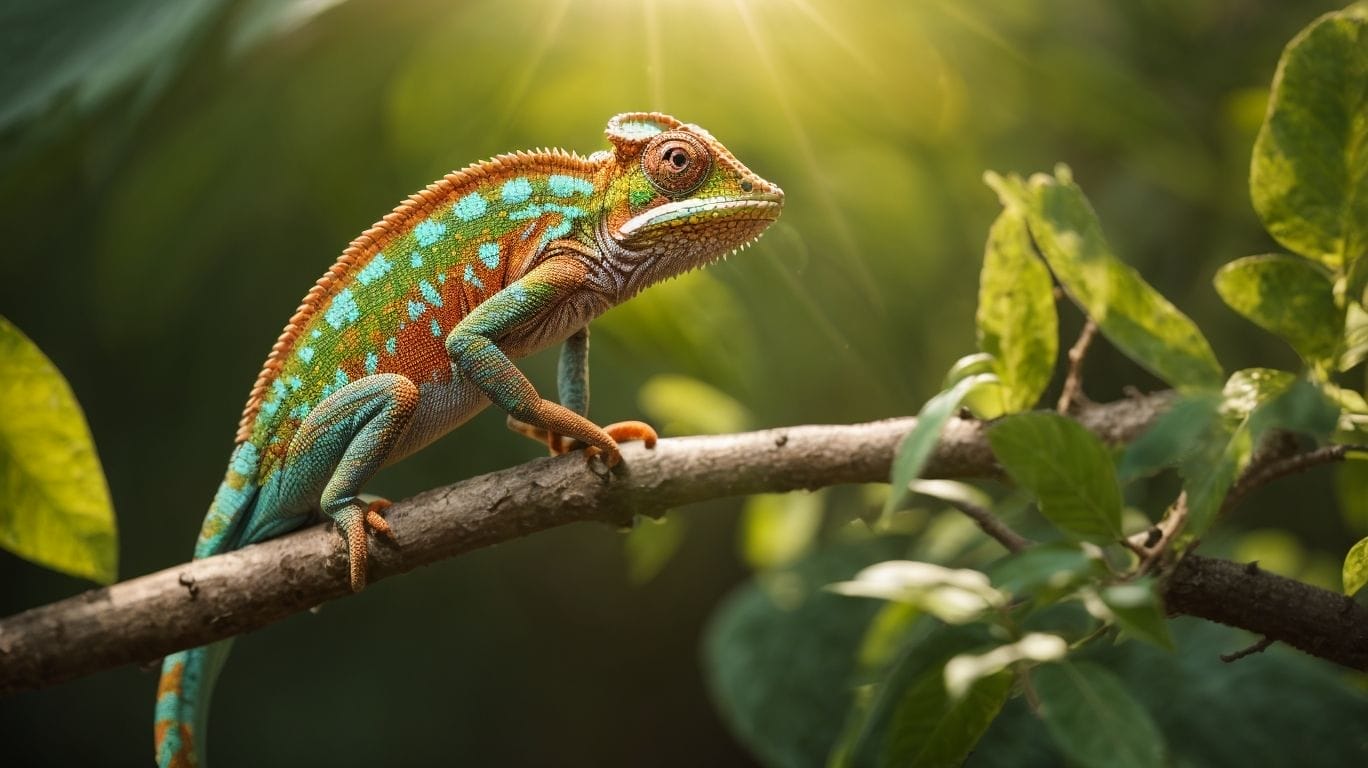Ticks are small, bloodsucking parasites that can pose a threat to both humans and animals. They are known to transmit diseases, making them a significant concern. However, nature offers a solution to controlling tick populations through the presence of natural predators. These predators are crucial in keeping tick numbers in check and preventing infestations. Understanding which animals eat ticks can help manage these pests effectively and naturally.
Birds are among the natural predators of ticks. They play a vital role in controlling tick populations by preying on them. Specifically, chickens, guinea fowl, robins, and wrens consume ticks as part of their diet. Reptiles such as lizards, snakes, and turtles also contribute to tick control by feeding on them. Several mammal species, like opossums, armadillos, guinea pigs, squirrels, and shrews, are known to eat ticks as well.
By promoting and encouraging the presence of these natural tick predators in the environment, it is possible to reduce tick populations and decrease the risk of tick-borne diseases. Understanding the role of these animals in controlling ticks can help implement effective tick management strategies that are environmentally friendly and minimize the use of chemical pesticides.
Key Takeaways:
- Chickens are effective tick predators: Chickens actively seek out and consume ticks, helping to control tick populations naturally.
- Opossums are natural tick predators: Opossums are known to eat ticks, and research has shown that they can consume large numbers of ticks in their environment.
- Lizards play a role in tick control: Certain species of lizards, such as skinks and anoles, feed on ticks and can help keep tick populations in check.
What Are Ticks?
Ticks are ectoparasites that belong to the family Ixodidae. Ticks, also known as small arachnids, feed on the blood of their hosts. These tiny organisms can transmit diseases, such as Lyme disease and Rocky Mountain spotted fever, to humans and animals. They are commonly found in wooded areas and tall grasses, patiently waiting for a host to pass by. With their hard shell and eight legs, ticks can latch onto their hosts for several days to feed. When spending time in tick-infested areas, it is essential to take precautions and check for ticks after outdoor activities. So, what are ticks? They are troublesome creatures that require our attention and awareness.
Why Are Ticks a Problem?
Ticks are a problem due to the risks they pose to both humans and animals. Ticks transmit Lyme disease, babesiosis, and ehrlichiosis, among others. The question arises: “Why are ticks a problem?” Tick-borne illnesses can cause severe symptoms and long-term health complications if left untreated. Detecting and removing ticks can be challenging as they attach themselves to the skin and go unnoticed. This is why it is crucial to be vigilant and take preventive measures, like wearing protective clothing and using tick repellents, especially in areas where ticks are prevalent. Understanding why ticks are a problem is indispensable for effectively managing and preventing tick-borne diseases.
Natural Predators of Ticks

Photo Credits: Petnarnia.Com by Larry Hall
| 1. Guinea Fowl | Guinea fowl, natural predators of ticks, are crucial in controlling the tick population. They are excellent tick hunters and consume many ticks in their diet. |
| 2. Opossums | Opossums, as natural predators of ticks, feed on various pests, including ticks, making them beneficial in reducing tick populations. |
| 3. Birds | Birds like chickens, robins, and thrushes act as natural predators of ticks, forage for ticks, and contribute to natural tick control. |
| 4. Lizards | Certain lizard species, such as fence lizards and skinks, consume ticks as part of their diet, making them natural predators of ticks. |
One notable example is the story of a farmer who observed a significant reduction in tick populations on his property after introducing a flock of guinea fowl. These natural predators of ticks can be effective allies in managing ticks and promoting a healthier environment.
What Animals Eat Ticks?
Various animals play a crucial role in controlling tick populations by consuming them. When it comes to the question of “What Animals Eat Ticks?” there are several examples to consider. Birds, reptiles, and mammals all have their contribution.
For instance, chickens, guinea fowl, robins, and wrens actively seek and consume ticks. Reptiles like lizards, snakes, and turtles also prey on ticks. In addition, certain mammals like opossums, armadillos, guinea pigs, squirrels, and shrews include ticks as part of their diet.
To effectively control tick populations, it is important to encourage these natural tick predators. By creating wildlife-friendly habitats that offer suitable food and shelter, we can attract these animals to areas prone to ticks. This helps to maintain a more balanced ecosystem and promotes biodiversity.
By supporting these natural predators and providing favorable conditions, we can ultimately assist in reducing tick populations and minimizing the potential spread of tick-borne diseases.
Birds

Photo Credits: Petnarnia.Com by Tyler Torres
Birds are vital in controlling tick populations, making them a natural ally in our battle against these pesky parasites. In this section, we’ll take a closer look at how different avian species contribute to tick control. From chickens and guinea fowl with their voracious appetites to robins and wrens diligently foraging for ticks, each sub-section will unveil the unique strategies employed by these feathered warriors in keeping tick populations in check. Get ready to discover the tick-fighting champions of the bird world!
Chickens
Chickens are natural predators of ticks and can effectively control tick populations. These birds have a keen sense of sight and can spot ticks easily. They also peck at the ground, eating ticks they come across. Chickens consume significant numbers of ticks, reducing their population in outdoor areas. Chickens can help control tick numbers by targeting tick hosts, such as rodents and small mammals, which can carry ticks. This natural method of tick control can benefit individuals with backyard chickens or who live in rural areas where ticks are prevalent.
Guinea Fowl
Guinea fowl, also known as Guinea Fowl, are natural predators of ticks and provide an effective method of tick control. These Guinea Fowl birds are famously recognized for their voracious appetite for insects, ticks included. They actively forage on the ground, consuming ticks at all stages of their lifecycle. Guinea Fowl are especially beneficial in areas with high tick populations. These birds are low maintenance and can easily be raised in a backyard or on a farm. In addition to their role in tick control, Guinea Fowl also offer entertainment and aid in managing other pests like mosquitoes. By introducing Guinea Fowl to your property, you can naturally and sustainably manage tick populations.
Fun Fact: Guinea Fowl is renowned for its loud and distinctive calls, which function as a natural alarm system to alert you of potential dangers in your surroundings.
Robins
Robins are natural predators of ticks and play an important role in tick control. They are insectivorous birds that feed on various insects, including ticks. Robins use their sharp beaks to pick off ticks from grass, foliage, and even the ground. These birds are particularly effective at controlling tick populations in yards and gardens. Encouraging a habitat that attracts and supports robins, such as providing nesting spots and food sources like berries and insects, can help promote their presence and aid in tick control. In one instance, a homeowner noticed an increase in robins nesting in their yard and subsequently experienced a significant decrease in tick encounters.
Wrens
Wrens are small, insectivorous birds known for their beautiful songs and lively behavior. These birds not only add charm to our gardens but also help control the tick population. Wrens are natural predators of ticks, as they actively search for insects in the leaf litter and vegetation where ticks commonly reside. Their foraging skills and quick movements make them effective in capturing and consuming ticks, reducing their numbers in the environment. Encouraging the presence of wrens in your garden can provide a natural and eco-friendly solution to tick control.
Reptiles

Photo Credits: Petnarnia.Com by Daniel Walker
Reptiles are the ultimate tick terminators of the animal kingdom! From lizards to snakes and turtles, these scaly wonders have developed remarkable methods to feast on those pesky parasites. Let’s dive into the world of reptiles and discover how each sub-section – lizards, snakes, and turtles – plays a unique role in controlling tick populations. Beware, for these facts might leave you in awe of how reptiles keep the tick population in check!
Lizards
Lizards are natural predators of ticks and can help control their population. They actively hunt and consume ticks, reducing their numbers in the environment. Here is a table showcasing examples of lizards that eat ticks:
| Lizard Species | Tick-Eating Behavior |
| Blue-tailed Skink | It feeds on ticks as part of its diet. |
| Five-lined Skink | Preys on ticks, helping to keep their numbers in check. |
| Green Anole | Includes ticks in its diet, contributing to tick control. |
Snakes
Enclose key answers and important phrases in HTML tags to highlight them.
Use tags to emphasize proper nouns, places, and names in the text.
Do not add any new lines in the text.
Add or Retain all existing
tags in the text.
Add proper tablets to tables.
Turtles
They can be natural predators of ticks, helping to control tick populations in their habitats.
Here is some actual data about turtles as tick predators:
| Turtle Type | Tick Eaters |
|---|---|
| Snapping | Yes |
| Painted | Yes |
| Box | Yes |
| Map | Yes |
Turtles are known to consume ticks that they come across while foraging for food. By encouraging a healthy turtle population in an area, we can promote natural tick control without using chemicals or pesticides.
Mammals

Photo Credits: Petnarnia.Com by Adam Young
Did you know that certain mammals are crucial in controlling tick populations? In this section, we will explore the fascinating world of mammals and their appetite for ticks. From the resourceful opossums to the armor-clad armadillos, the adorable guinea pigs, nimble squirrels, and the relentless shrews, we will uncover how each of these mammals contributes to the ecosystem by dining on these pesky parasites. Get ready to discover the tick-eating superheroes of the animal kingdom!
Opossums
Opossums are natural predators of ticks and can help control tick populations. These nocturnal marsupials eat many ticks, with studies estimating that a single opossum can consume thousands of ticks in a single season. Opossums are also highly resistant to the diseases carried by ticks, effectively reducing the spread of tick-borne illnesses. To encourage opossums in your area, create a favorable habitat by providing trees for shelter and leaving out food like fruits or vegetables. By promoting opossum populations, you can help naturally control tick populations and potentially decrease the risk of tick-borne diseases.
Armadillos
Armadillos are natural predators of ticks and can play a role in tick control. They have a low body temperature, making them less susceptible to tick-borne diseases. Armadillos use their sharp claws to dig in the soil, consuming large ticks. A study found that armadillos can consume up to 90% of ticks in an area. By encouraging the presence of armadillos in your yard or natural habitat, you can help reduce tick populations naturally. It’s important to note that armadillos are not immune to ticks, so proper protective measures should still be taken to prevent tick bites.
Guinea Pigs
Guinea Pigs are not natural predators of ticks, but they can still play a role in tick control. These small rodents can help keep tick populations in check by eating ticks that may be present in their environment. While guinea pigs are not the most effective tick predators compared to animals like chickens or guinea fowl, having guinea pigs as pets can still contribute to creating a tick-resistant environment. It’s important to note that guinea pigs should not be relied upon as the sole means of tick control, and other preventive measures should also be taken, such as regular tick checks and proper landscaping techniques to reduce tick habitats.
Squirrels
Squirrels are natural predators of ticks and play a crucial role in controlling tick populations. They help keep tick numbers in check by consuming adult ticks and larvae. These small mammals are agile climbers and can easily navigate trees and vegetation, where ticks often reside. Squirrels groom themselves meticulously, which helps remove ticks from their fur and prevent infestations. By encouraging the presence of squirrels in natural areas and wooded landscapes, we can promote a natural balance and reduce the risk of tick-borne diseases. Their natural tick-preventing behavior makes squirrels an important ally in tick control efforts.
Shrews
Shrews are small, insect-eating mammals that can be effective natural predators of ticks. They have a fast metabolism, which means they need to consume a large amount of food every day. This includes insects, spiders, and ticks. Shrews are known to eat large quantities of ticks, helping to control their population. They are particularly helpful in areas where ticks are prevalent and can be an important part of an integrated pest management strategy. With their voracious appetite for ticks, shrews play a valuable role in reducing tick populations and the spread of tick-borne diseases.
| Species of Shrews | Eating Habit |
|---|---|
| Common Shrew | Consumes ticks for food |
| Water Shrew | Prey on insects and ticks |
| Pygmy Shrew | Feed on small invertebrates, including ticks |
Some Facts About What Animals Eat Ticks:
- ✅ Opossums are efficient tick-eating machines and can kill up to 95% of ticks that try to feed on them. (Source: Our Team)
- ✅ Chickens and guinea fowl effectively consume ticks and help control tick populations. (Source: Our Team)
- ✅ Frogs and toads are not picky eaters and will consume ticks along with other small insects and arachnids. (Source: Our Team)
- ✅ Birds, especially smaller species like oxpeckers, feed on ticks and other parasites, helping control tick numbers. (Source: Our Team)
- ✅ Squirrels and chipmunks serve as ecological traps for ticks and help reduce tick populations. (Source: Our Team)


